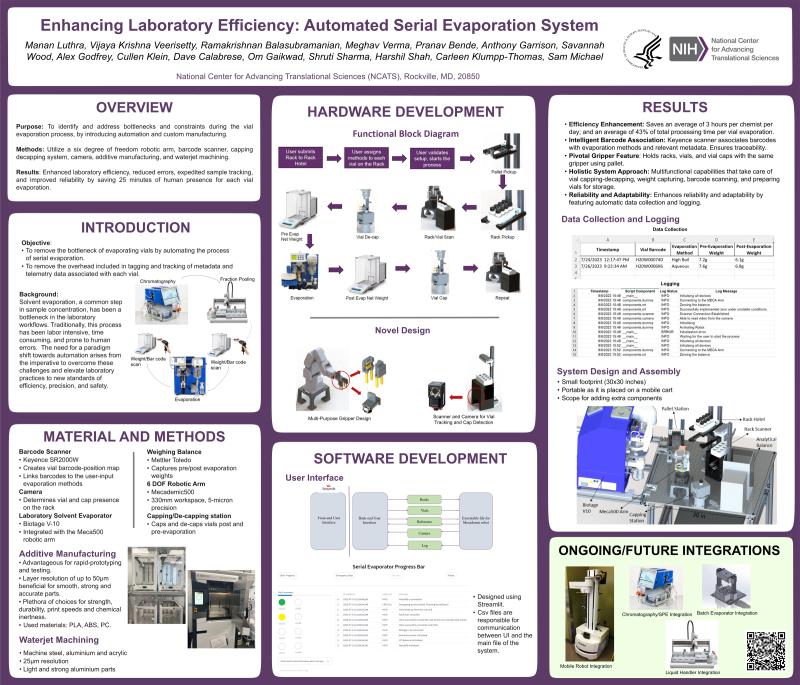Automated Serial Evaporator
Development of an Automated Serial Evaporator for Enhanced Laboratory Efficiency at NIH/NCATS
Collaborated with a team of six to design and implement an Automated Serial Evaporator, addressing a critical bottleneck in evaporation workflows at the National Institutes of Health/National Center for Advancing Translational Sciences (NIH/NCATS). This solution resulted in a significant productivity boost, saving approximately 3 hours per chemist per day.
Key Contributions:
Automation Integration with Robotics:
- Integrated the MECA500 Robotic Arm to automate vial handling and evaporation processes.
- Designed and implemented automation workflows, allowing seamless operation and enhanced throughput in laboratory workflows.
Computer Vision for Vial Detection:
- Deployed a camera-based system with edge-detection and segmentation algorithms to accurately identify and locate vials in real time.
- Integrated a barcode scanner for vial identification, ensuring precise sample tracking and workflow traceability.
System Integration and CI Development:
- Conducted system integration by interfacing robotic hardware, sensors, and software components using Continuous Integration (CI) tools to maintain code quality and system performance.
- Implemented robust communication protocols between devices, enhancing reliability and operational safety.
User Interface Design:
- Designed and developed an intuitive User Interface (UI) to streamline interaction with the automated system, enabling chemists to easily monitor and control the process.
- Incorporated real-time status updates and customizable configurations to optimize user experience.

Project Poster.
Impact:
- Increased efficiency of evaporation workflows, allowing researchers to focus on higher-value tasks.
- Demonstrated the potential of automation in reducing repetitive manual work, improving precision, and ensuring consistency in high-throughput laboratory settings.
- Highlighted the practical application of robotics and computer vision in advancing scientific research.